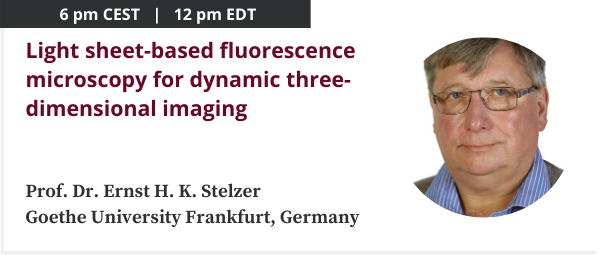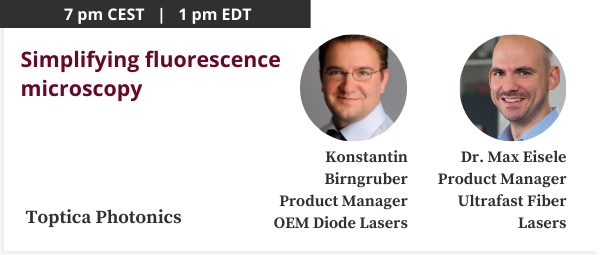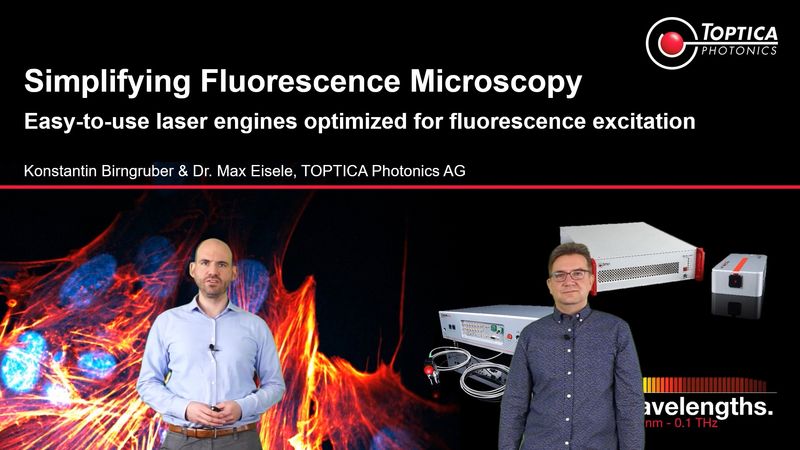Light Sheet-based Fluorescence Microscopy
12-04-2021 For the second time, the Wiley Analytical Science Conference will bring together researchers, users and manufacturers from the fields of microscopy, spectroscopy, mass spectrometry and laboratory automation, and related areas. Starting on April 19, 2021, we look forward to exciting presentations by experts and stimulating discussions in the live Q&A sessions.
Key learnings
- Essential laser requirements for fluorescence excitation and two-photon fluorescence excitation
- Easy-to-use laser engines optimized for fluorescence excitation and two-photon fluorescence excitation
- How laser engines can simplify your research in fluorescence microscopy
Don’t miss the 2-part session on fluorescence microscopy on April 20, 2021 at the Wiley Analytical Science Virtual Conference. In part one, the discussion will highlight the benefits of light sheet-based fluorescence microscopy. Part two provides insight into guidelines for suitable light sources that enable the best possible microscopy results.
Part I: Light Sheet-based Fluorescence Microscopy for dynamic three-dimensional Imaging
Prof. Dr. Ernst H.K. Stelzer, Professor for Physical Biology and Advanced Light Microscopy, Goethe-Universität (Frankfurt am Main, Germany)

The optical sectioning capability is fundamental for dynamic three-dimensional imaging. One of a few instruments, with this property is light sheet-based fluorescence microscopy (LSFM). The significance of LSFM’s illumination-based optical sectioning is that viability and fluorescence signal of a living specimen are retained even though millions of images are recorded for days or even weeks. Hence, LSFM makes the sincerest effort to address near natural conditions.
Specific benefits of LSFM: good axial resolution, imaging along multiple directions, deep tissue penetration, high signal-to-noise ratio, compatibility with fluorescent dyes/proteins, reduced fluorophore bleaching and photo-toxicity, millions of pixels recorded in parallel, excellent specimen viability and compatibility with functional imaging technologies.
Who should attend the webinar?
- Cell biologists
- Developmental biologists
- Entomologists
- Clinicians
- Microscopists
Part II: Simplifying fluorescence microscopy – Easy-to-use laser engines optimized for fluorescence excitation
Konstantin Birngruber, Product Manager OEM Diode Lasers, TOPTICA Photonics AG
Dr. Max Eisele, Product Manager Ultrafast Fiber Lasers, TOPTICA Photonics AG

In this Webinar Konstantin Birngruber and Max Eisele will give an introduction into the key requirements for excitation sources for fluorescence microscopy and two-photon fluorescence microscopy with a focus on light-sheet microscopy. This will provide scientists with a guideline for suitable light sources that enable the best possible microscopy results.
This introduction is followed by an overview of suitable laser sources that are fully turn-key, offer great ease-of-use, and guarantee exceptional results.
Who should attend the webinar?
- Scientists and companies working in the field of fluorescence microscopy and light-sheet microscopy
- Scientists and companies working in the field of two-photon microscopy
- Scientist and companies who are looking for easy-to-use and fully optimized laser engines for their research or product lines
Key Learning Objectives
- Learn about essential laser requirements for fluorescence excitation and two-photon fluorescence excitation
- Learn about easy-to-use laser engines optimized for fluorescence excitation and two-photon fluorescence excitation
- Learn how our laser engines simplify your research in fluorescence microscopy
This webinar is brought to you by Wiley with support provided by TOPTICA.

